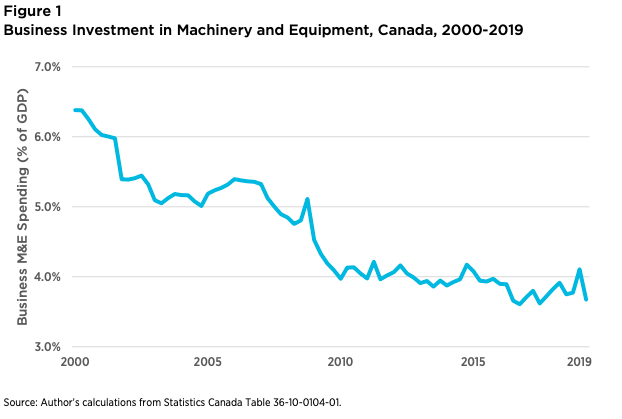Future Skills: The impact of technology on work and productivity is slowing down, not speeding up
As the future of work continues to evolve, so too do the skills that Canadians will need to succeed. The Future Skills Centre, Ryerson University's Diversity Institute, and the Public Policy Forum are releasing a series of eight reports in January to identify the most important issues currently impacting the skills ecosystem in Canada, to help support further research and strengthen policymaking.
The following excerpt is taken from economist Jim Stanford's report Thinking Twice about Technology and the Future of Work, from the chapter titled "Technology in Action: Slow or Fast?"
//
New devices and robots can perform incredible feats in controlled and laboratory settings. But their impact on real-world work and productivity is not accelerating as expected. In fact, it seems to be slowing. In practice, many real-world hurdles and prerequisites must be overcome before some of these innovations can be adopted in widespread day-to-day use. Automation, artificial intelligence, and other innovations can’t be used in practice without major capital investments by firms; enhancements in infrastructure; meeting safety, privacy and insurance requirements; new training and qualifications for workers; and social acceptance.
Take the case of self-driving vehicles. While autonomous vehicle technology has advanced rapidly, the barriers to its use in real-world applications are still so daunting that this shift will almost certainly take place slowly and over multiple decades. For now, driving (whether trucks, buses, taxis or even bicycles) remains one of the fastest-growing occupations. To be sure, the elimination of monotonous, low-paying, often dangerous driving jobs could be a positive development, so long as displaced workers could be assigned to less dangerous and better-paying work. But in practice, this occupation is going to stay with us for a long time to come.
In recent years, business investment has been very weak in Canada and many other industrial economies. And Canadian businesses have lagged behind others in technology adoption. Businesses are investing too little—not too much—in robots, automation and other forms of capital equipment and technology. As illustrated in Figure 1, private capital spending has declined by more than one-third as a share of GDP since 2000. The continued expansion of low-productivity, menial jobs is one consequence of this chronically weak investment performance.
This explains a perverse finding: the aggregate capital-intensity of production in Canada’s economy is actually falling. After depreciation, net capital assets have been growing more slowly than employment. In other words, the typical Canadian worker uses less capital equipment in their work today, not more.
Instead of pumping after-tax profits into new capital and technology, businesses are instead emphasizing dividend payouts, share buybacks and generous executive compensation.
Because of the chronic weakness in business capital spending and innovation, economy-wide productivity growth is slowing down, not speeding up. This is the most compelling indicator that the use of labour-saving technology is not actually accelerating. As illustrated in Figure 2, labour productivity has grown by less than 1% a year since the turn of the century. That’s unspectacular by both historical and international standards, and is less than half the pace of the period from 1960 through 2000.
In the expansionary postwar decades of the 1950s, 1960s and 1970s, unemployment was low, real wages grew rapidly and social programs expanded. Technological change and productivity growth went hand-in-hand with rising living standards, near-full employment and growing social security.
 Today, however, society is more unequal and competitive. This has reinforced the uncertainty and precarity experienced by many Canadians, which in turn fosters fear and resistance to new technology. It is the change in the social and economic context of work, not technology itself, that best explains the insecurity and inequality so visible in Canada’s labour market.
Today, however, society is more unequal and competitive. This has reinforced the uncertainty and precarity experienced by many Canadians, which in turn fosters fear and resistance to new technology. It is the change in the social and economic context of work, not technology itself, that best explains the insecurity and inequality so visible in Canada’s labour market.
R$
| People: | |
| Topics: |
Events For Leaders in
Science, Tech, Innovation, and Policy
Discuss and learn from those in the know at our virtual and in-person events.
See Upcoming Events
You have 0 free articles remaining.
Don't miss out - start your free trial today.
Start your FREE trial Already a member? Log in
By using this website, you agree to our use of cookies. We use cookies to provide you with a great experience and to help our website run effectively in accordance with our Privacy Policy and Terms of Service.






